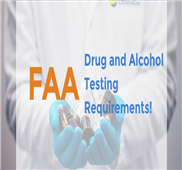
"Normal" color vision is no longer a requirement. The language for color vision is amended for first-class medical certificates. Your certificate will include a limitation that you wear corrective lenses while exercising privileges.įor 3rd class, you need to be able to see 20/40 or better in each eye, with or without correction for distance and near vision. If you wear eyeglasses or contact lenses to see 20/20, you meet the standards. When you renew your next medical, ask the AME to include a note requesting that the waiver be removed from your records. Waivers for uncorrected visual acuity are no longer valid. Your aviation medical examiner (AME) will probably check your uncorrected vision just to see if there have been any significant changes since your last exam. There is no uncorrected distant vision requirement. For near vision, the standard is 20/40 (at 16 inches) and, for pilots age 50 and over, a 20/40 intermediate vision (at 32 inches) is also required. Subpart E is Certification Procedures, and includes the detailed description of special issuances that are required for pilot applicants who have disqualifying medical histories.ġst and 2nd class visual acuity standards are identical and require that you be able to see 20/20 or better in each eye, with or without correction for distance. The subparts are further divided by organ group including Eye Ear, nose, throat, and equilibrium Mental Neurologic Cardiovascular and General medical condition. (More on that in the question and answer section.) Subparts B, C, and D include the minimum standards for First, Second, and Third Class medical certificates.
#Faa medical durations driver
Subpart "A" of FAR 67 is general information including certification of foreign airmen and an important authorization for access to the National Driver Register. The amended rule eliminated outdated language and standards, reformatted the regulation into subparts, and increased the number of disqualifying conditions. More than two years after a Notice of Proposed Rulemaking was issued in October 1994, new medical standards took effect on September 16, 1996. Or, see AOPA’s online medical certification resource for more information on medical certificates, special issuance, and more. If you’re concerned about a condition that may complicate your medical certification, call 800/USA-AOPA (872-2672) for help. The regulations and policies govern the review, but each case is evaluated on an individual basis.ĪOPA medical certification specialists routinely help pilots through the sometimes-complicated process of obtaining a medical certificate. Policies are established to give the FAA aeromedical personnel guidelines for determining that an applicant is eligible to hold a medical certificate. The standards have to be general and subject to interpretation by the FAA doctors who make the decisions. There is no practical way for all possible medical conditions to be addressed in a regulation.

The airman medical standards are minimum standards. Aviation safety is foremost, and each medical history is evaluated on the basis of risk of incapacitation.

The FAA also has to consider the prevailing political and legal climate in the course of evaluating an applicant's medical history. Certifying pilots is a bureaucratic process, devoid of purely medical considerations alone. The Airman Medical Standards and Certification Procedures, FAR Part 67, is a maze of medical and legal language that is, in some respects, clear and concise, in others, general and vague. FAA has the most progressive civil aviation medical certification standards in the world. The process takes time, however, and it will be at least two years before the transition is completed. A major overhaul of the system is underway now. There are ongoing problems in the administration of the system that result in some lengthy delays in processing medical applications. The FAA Office of Aviation Medicine regulates, among other things, airman medical certification standards and structures certification policies and processes to reflect medical technology advancements. The FAA Act of 1958 charges the federal government with promoting aviation and maintaining aviation safety standards. The content of the letter may be confusing and just a little intimidating, and it's then that we might begin to wonder just how the FAA medical certification process really works. When pilots complete an application for a new medical certificate, many find themselves on the receiving end of a letter from the FAA that arrives months after the medical examination.


 0 kommentar(er)
0 kommentar(er)
